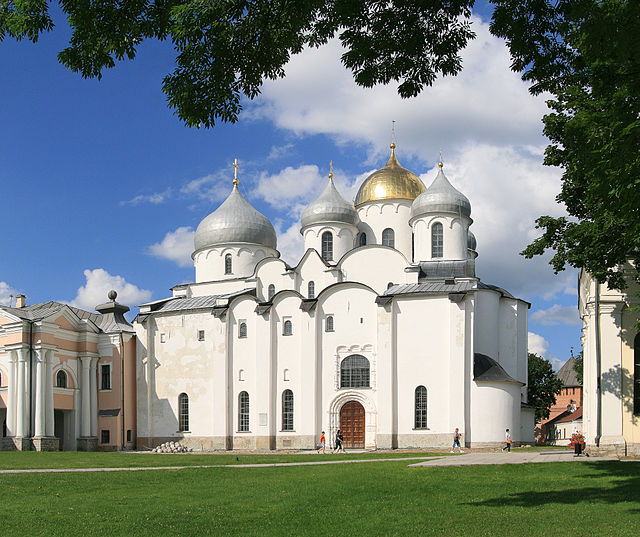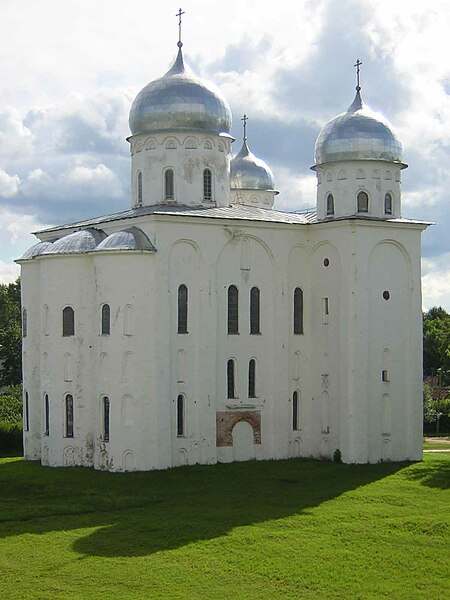Naryshkin Baroque, also referred to as Moscow Baroque or Muscovite Baroque, is a particular style of Baroque architecture and decoration that was fashionable in Moscow from the late 17th century into the early 18th century. In the late 17th century, the Western European Baroque style of architecture combined with traditional Russian architecture to form this unique style. It is called Muscovite Baroque as it was originally only found within Moscow and the surrounding areas. It is more commonly referred to as Naryshkin Baroque, as the first church designed in this style was built on one of the Naryshkin family's estates.
The Assumption Church on Pokrovka Street, Moscow is a notable example of Naryshkin Baroque architecture. This church is no longer standing, as it was demolished in 1936.
Donskoy Monastery in Moscow
Image: Church of the Protection of the Theotokos in Fili 04
Image: Church of the Holy Mandylion in Ubory
The architecture of Russia refers to the architecture of modern Russia as well as the architecture of both the original Kievan Rus', the Russian principalities, and Imperial Russia. Due to the geographical size of modern and Imperial Russia, it typically refers to architecture built in European Russia, as well as European influenced architecture in the conquered territories of the Empire.
Saint Basil's Cathedral (1482–95) is a showcase of Muscovite Russian architecture.
Cathedral of St. Sophia, Kyiv
Saint Sophia Cathedral in Veliky Novgorod (1045–1050)
St. George's Cathedral of Yuriev Monastery near Veliky Novgorod (1119)








